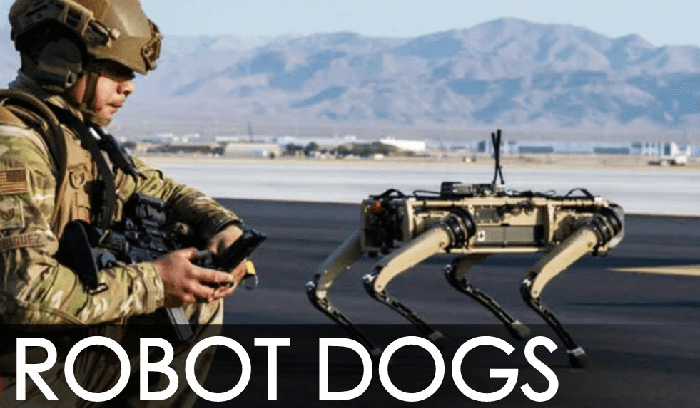What is seen as a sign of increasing use of artificial intelligence in future warfare, the United States Air Force has begun fielding robot ‘dogs’ that will be trained to carry out specific missions alongside the troops.
The four-legged, headless robot dogs were deployed during a military exercise, considered one of the US Air Force’s largest-ever high-tech experiments.
The robots were flown in by Lockheed Martin’s four-engine C-130 Hercules turboprop military transport aircraft to the Nellis Air Force Base in the Mojave Desert of Nevada, after which the ‘dogs’ were sent out of the aircraft to detect ‘threats’ to humans sitting inside.
The robots are part of the Advanced Battle Management System (ABMS) currently being developed by the US Air Force, which utilizes AI and data analytics to detect and counter threats to their military personnel. As many as 28 vendors have already bagged ABMS development contracts worth $950 million for the next five years.

The program is seen as a means to protect American military assets in space or within the country with the use of missiles or other means, and the robot dogs are seen as one of them.
According to Will Roper, Assistant Secretary of the Air Force for acquisition, technology, and logistics, soldiers carrying out missions in future combat are likely to face “a dizzying array of information”, which will create a need for them to have a reliance on data synthesis done in nanoseconds to fight effectively.
“Valuing data as an essential warfighting resource, one no less vital than jet fuel or satellites is the key to next-gen warfare,” Roper said.
The robot dogs – also called Vision 60 UGVs (autonomous unmanned ground vehicles) — are built by a Philadelphia-based company called Ghost Robotics.
“A core design principle for our legged robots is reduced mechanical complexity when compared to any other legged robots, and even traditional wheeled-tracked UGVs,” according to the website of Ghost Robotics.
“By reducing complexity, we inherently increase durability, agility, and endurance.”
The dogs, which can be controlled remotely by operators, have the ability to provide visuals of the area before the soldiers are deployed so as to maintain their safety. They also possess the ability to scale heights, surfaces, and terrains.
“Using on-board computers, cameras, and other detection devices, the electronic canines can scout for threats before human exposure to potential dangers or allow human defenders to take care of more pressing matters,” the company said in a statement.
The robots might be considered a key component of the US Air Force’s “Kill Chain” a military term, which refers to the process of analysis, planning, and execution of military operations.
According to General John Raymond, chief of space operations, “We are exploring how to use … ABMS to link sensors to shooters across all battlespaces, at speed, and under threat. Maturing these concepts and capabilities is necessary to fight and win in the information age.”




